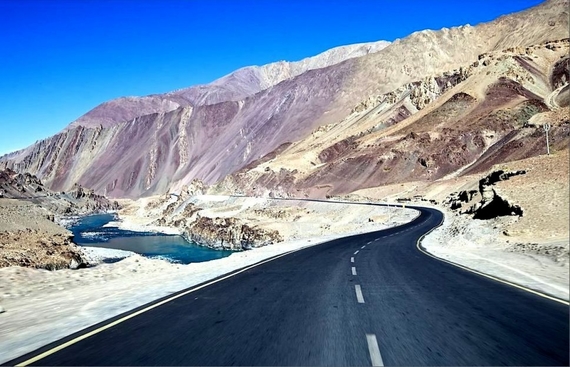India and the new Great Game in Central Asia

The region in the world map known as Central Asia – roughly comprising the countries of Afghanistan, Uzbekistan, Turkmenistan, Tajikistan, Kyrgyzstan, Kazakhstan and the Xinjiang Autonomous Region of China has for long since antiquity been a region of tussle between the great powers. It dates back to the early days of the Silk Route around one century BC – early 1st century AD when the Kushan Empire and the Han Dynasty from China would have repeated minor wars against each other for the control over the semi-independent city-state kingdoms that dotted over the Takla Makan desert (now Xinjiang Province). The trend continued to happen with new Empires coming in and out well towards the Colonial age. During the colonial era, The Soviet Union and the British Empire were vying control over the region. This gave birth to the term “The Great Game” during the Colonial age.
After the end of the two World Wars and the ensuing Cold War that followed, the ancient silk route that facilitated the exchange of people, ideas, inventions and gave birth to the world that we see today was truly lost and forgotten. The vacuum was finally filled in by China with the country slowly evolving into the manufacturing hub of the world. China started gaining the geopolitical upper hand over the region with its neighbouring Central Asian republics suffering from the Soviet hangover, desperate for investments and sponsorship. It took no time for China to take complete control over the region by constructing a network of highways that connected Central Asia and China to the Middle East as well as Europe. This served China a significant logistical advantage in terms of exports and imports. The other route via the South China Sea, Indian Ocean, Red Sea had a lot of tariffs and taxes involved as it passed through a dozen countries in South-East Asia, India, the Gulf countries, pirates along the Somalian coast and what not. The Baluchistan-Gilghit Baltisthan highway that runs through POK, Aksai Chin and Xinjiang Province is just one of the many networks that China has laid down over Central Asia in the past three decades.
This is where India has Initiated another Great Game.
The Modi led BJP government that has been controlling India over the past six years has an entirely different stance than the Congress government that ruled most of the time frame in independent India on the issue over Central Asia. Recently in an attempt to capture the Central Asian market the government of India started constructing the Darbuk–Shyok–DBO Road, also called the Sub-Sector North Road – an all-weather strategic road in Eastern Ladakh that reaches up to Shyok. Although a highway intended to connect the distant places of Ladakh towards India on the official record. It is also the stepping stone for gaining further inroads into Central Asia. No wonder the Chinese sees it as a threat, and hence the need to flex its muscles which resulted in violent border clashes in Eastern Ladakh in recent months. With the situation in Ladakh very tense with a full-fledged war highly likely to occur this early winter, a new great game has been set into motion. From the Chinese point of view, the reaction is understandable, given billions of investments done over the years.
Having said that, patience should be the name of the game from India’s perspective. With an independent Baluchistan, East Turkestan and independent Tibet likely to be carved out in the next 10 -15 years, the road towards Central Asia will be naturally opened up for India. This is India’s great opportunity to be the dominant economic power in South Asia provided the country plays its cards right.
Read More News :
Motorola partners with Flipkart to launch smart home appliances

.jpg)
.jpg)
